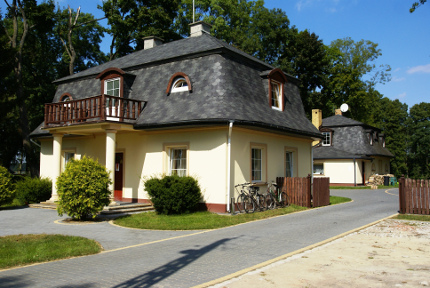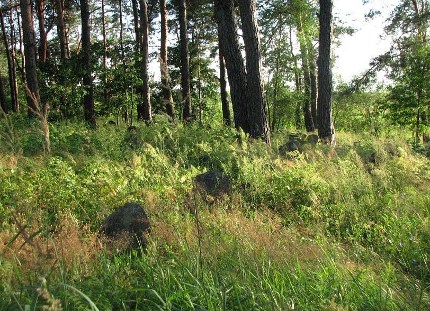Places

A village in the Łęczna–Włodawa Lake District and a holiday resort located among forests, lakes and fish ponds (covering over 500 ha). Historic sights include buildings within the former estate of the Sosnowski Family, a Baroque manor annex from the mid-18th c., a 25-hectare park with a partial geometric design, 19th-century Orthodox church and a parish church displaying Baroque and Classicist features. ...

A village in Polesie with well-preserved historic architecture. It is the seat of the Educational Centre and Museum of the Poleski National Park and the starting point of the ‘Spławy’ nature tourist route leading along a wooden gangway to Łukie Lake. There is a specially-designed tourist trail for children called ‘Żółwik’ (Little turtle). ...

A large village situated at the fork of the Wieprz River and the Vistula River. In the past it was a town where court proceedings and conventions of the gentry were held. Special interest should be given to the Franciscan Church of Transfiguration of Christ from the 18th-19th c. and St. Martin’s Church – a late-Gothic temple erected in 1434 and rebuilt many times from the 16th to the 20th c. ...

A town since 1546. Here the first victorious battle of Polish insurgents during the November Uprising (14th November 1831) took place, which is commemorated with a monument to General Józef Dwernicki and the annual ‘Cannons roar over Stoczek’ road run. Tourists will enjoy a visit to the recreational resort by the reservoir on the Świder River and scenic pine forests with a river spring. ...


The park covers the areas located within the communes of Dubienka and Białopole in the Poviat of Chełm and the communes of Horodło and Hrubieszów in the Poviat of Hrubieszów . The predominant landscape is flat with occasional hillocks partially overgrown with pine forests. The most interesting part of the park is the valley of the Bug River with its old riverbeds, meanders and riparian forests. The park is a refuge of the collared flycatcher (Ficedula albicollis), which has its nesting sites here. Other rare species of birds include the black woodpecker, the red-breasted flycatcher and th ...

A village on the border of Polesie and Podlasie. Many soldiers and officers of Tatar origin who served in the Polish army settled here in the second half of the 17th c. The largest Tatar cemetery (‘mizar’) in the Lublin Region, with over 150 gravestones from the 17th-20th c., is located here. Another mizar with about 40 tombstones can be found in Kolonia Zastawek near Lebiedziew. ...

A town in Central Roztocze, on the north-east outskirts of the Solska Forest. Its original name, Suszec, meant a dry, sandy and infertile land. Today Susiec is a popular holiday resort with the best assets nature can offer – fresh air, crystal-clear rivers and scenic woodlands. The natural gems of this area are protected in reserves. The best known include: “Czartowe Pole”, covering the Sopot River gorge and the ruins of an 18th century paper mill, “Nad Tanwią”, protecting the Tanew River gorge and its small waterfalls called szumy, as well as “Szum”, with the Szum River gorge. ...

Situated east of Lublin, it is one of the youngest towns in the region, established in 1954. Świdnik is well-known for a helicopter and glider factory and as the location of Lublin Airport, a passenger port opened in 2012. The town centre features typical Socialist-Realist architecture, whereas the district of Adampol located near the forest has examples of holiday lodges from the 1930s. ...

This city is known for being featured in a well-known poem by Jan Brzechwa that tells the tale of a certain beetle. Tourists can find two figures of beetles playing the violin. The wood en one is by the spring and one cast in bronze is on the market square. The biggest attraction of this once-multicultural city are its religious monuments: the synagogue, now housing a community centre, the Orthodox Church of the Dormition of the Holy Mother of God, with its 18th century wall paintings, and the Church of St. Nicholas and St. Catherine that have 18th century wall paintings, and&nb ...
Page 13 of 16









